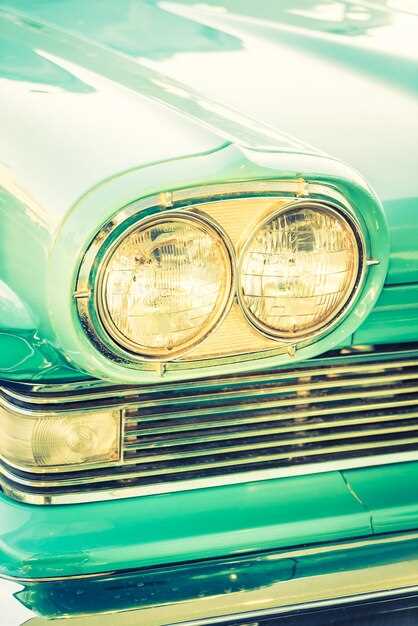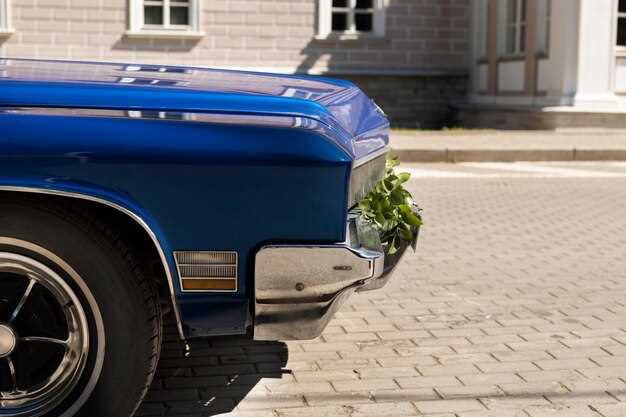
The Mopar brand has become synonymous with performance, power, and a rich automotive heritage. This iconic division of Chrysler has produced some of the most memorable muscle cars in history, captivating automotive enthusiasts and collectors alike. With a unique blend of engineering prowess and aggressive styling, Mopar vehicles are a testament to an era where horsepower ruled the streets, leaving a lasting legacy in American car culture.
In this article, we will delve into the legendary classic Mopar muscle cars that every car enthusiast should know. From the striking Dodge Charger to the fierce Plymouth Barracuda, these vehicles not only define the muscle car genre but also represent a pivotal moment in automotive history. Each model carries its own story and technological innovations that set it apart from the competition, making them highly sought after by collectors and fans alike.
Join us as we explore the must-know classic Mopar muscle cars that continue to inspire passion and admiration in automotive circles. Understanding their significance not only enhances appreciation for these American icons but also provides insight into the engineering and design philosophies that shaped an entire generation of vehicles.
Top 5 Mopar Models That Changed the Muscle Car Game
The Mopar brand has become synonymous with American muscle performance, boasting a rich history of iconic vehicles that redefined speed and power. Here are five standout models that significantly impacted the muscle car landscape.
1. 1964 Plymouth Barracuda: Often recognized as one of the first true pony cars, the Barracuda set the stage for the competition. Its unique fastback design and options for performance-oriented engines, including the 273 cubic-inch V8, appealed to a generation of car enthusiasts. The Barracuda’s introduction in 1964 forced competitors to rethink their designs and performance strategies.
2. 1966 Dodge Charger: The 1966 Charger combined cutting-edge design with robust performance. Its iconic coke-bottle shape and optional 383 cubic-inch V8 engine made it a formidable force on the streets. This model influenced future generations with its styling and comfort, cementing the Charger as a staple in muscle car culture.
3. 1970 Plymouth Road Runner: Designed to be a no-frills, high-performance vehicle, the Road Runner was notable for its affordability and speed. Featuring the legendary 426 HEMI engine option, it became a symbol of raw power. The Road Runner’s branding and cartoon mascot made it an instant hit, encapsulating the fun, rebellious spirit of the 1970s muscle car era.
4. 1970 Dodge Challenger: The Challenger emerged as a fierce competitor in the muscle car segment, characterized by its powerful engine options, including the 440 Six Pack and the fearsome 426 HEMI. Its aggressive stance and customizable features created a legend that has endured in popular culture. The Challenger’s revival in the 21st century further solidified its legacy.
5. 1971 Plymouth GTX: As the pinnacle of the muscle car realm during its production, the GTX represented luxury combined with high performance. With its powerful engines and sleek design, it offered a refined alternative to more utilitarian models. The GTX’s push towards performance and style inspired future muscle car developments, making it a noteworthy chapter in automotive history.
Key Features to Look for When Buying a Classic Mopar

When considering a classic Mopar, it is essential to inspect several key features to ensure you are making a wise investment. First and foremost, the authenticity of the vehicle should be verified. Look for original parts, matching numbers for the engine and transmission, and check the VIN against Mopar records to confirm the car’s history.
Next, evaluate the body condition. Rust is a common issue for classic cars, so pay close attention to areas such as the wheel wells, floors, and trunk. Inspect the paint job for originality; a factory finish can add significant value compared to a repainted exterior. Any signs of poor bodywork or mismatched panels may indicate past accidents or neglect.
The engine is another critical factor. Ensure that the engine runs smoothly and check for leaks or unusual noises. Familiarize yourself with the different engine options and their corresponding performance specifications, as some models had high-performance variants that are more desirable. If possible, obtain a compression test to gauge the engine’s health.
Examine the transmission carefully, as it plays a vital role in the vehicle’s performance. Ensure it shifts smoothly through all gears, without any hesitation or grinding. Be attentive to the type of transmission; classics may have manual or automatic systems, and certain configurations may be more sought after.
Don’t overlook the interior features. Assess the condition of the upholstery, dashboard, and gauges. Original parts, such as the steering wheel and radio, can enhance the vehicle’s value. If the interior has been modified, consider whether the changes align with your preferences or if they detract from the car’s authenticity.
Finally, consider the documentation that comes with the vehicle. Service records, original sales paperwork, and restorations details not only tell the car’s story but also provide insight into how well it has been maintained. A well-documented vehicle is usually more desirable in the classic car market.
Restoration Tips for Maintaining Your Mopar Muscle Car’s Value

Restoring a classic Mopar muscle car is not just about aesthetics; it is also a strategic move to preserve and enhance its value. Here are essential tips for maintaining your Mopar’s worth during and after the restoration process.
Firstly, focus on originality. Whenever possible, use OEM (Original Equipment Manufacturer) parts instead of aftermarket components. This not only maintains the car’s authenticity but also appeals more to collectors. Keep all original parts, as they can increase the car’s value regardless of their condition.
Secondly, document the restoration process meticulously. Maintain a detailed log of all repairs, parts replaced, and modifications made. This documentation can serve as proof of quality workmanship and originality, enhancing the car’s desirability if you choose to sell it in the future.
Another vital aspect is selecting the right restoration shop or professionals. Choose someone experienced with Mopar vehicles specifically. Their expertise will ensure that the restoration is done correctly, adhering to best practices that uphold the vehicle’s value.
Pay attention to the paint and bodywork. High-quality, period-correct paint not only protects your car but also plays a significant role in retaining its value. Make sure to repair any rust or body damage thoroughly before painting. Use a reputable paint brand that matches factory specifications to ensure authenticity.
Furthermore, consider interior restoration carefully. Preserve original upholstery if possible. If replacement is necessary, opt for materials that closely match the original. Clean and restore interior components rather than replace them unnecessarily, which can detract from the car’s original charm.
Regular maintenance is equally crucial. Keep up with both mechanical and cosmetic maintenance post-restoration. This includes regular oil changes, fluid checks, and engine tuning. A well-maintained vehicle will always command a higher price, reflecting its condition and the care it has received over the years.
Lastly, storage plays a significant role in preservation. Store your Mopar in a climate-controlled environment, away from direct sunlight, moisture, and extreme temperatures. Investing in a high-quality cover can also protect the vehicle from dust and minor damage.
By adhering to these restoration tips, you can ensure that your Mopar muscle car not only retains its value but potentially appreciates over time, making your investment worthwhile.
